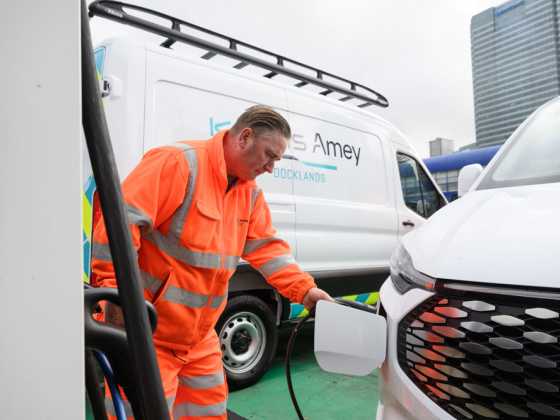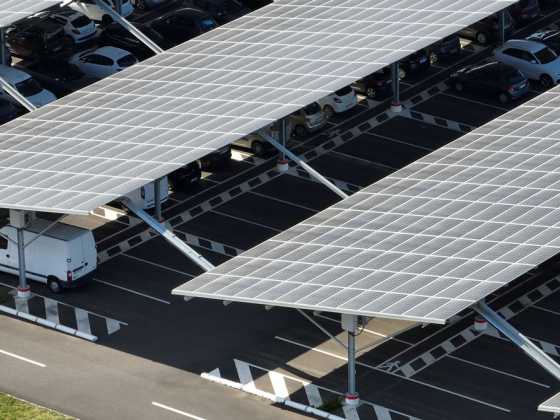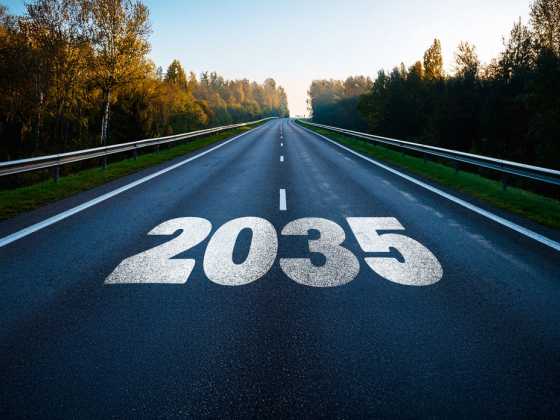A guide to Clean Air Zones

With many Clean Air Zones (CAZs) in operation or due to commence soon, the BVRLA summaries the compliance requirements and restrictions to help fleet operators navigate through the CAZ landscape
In 2015, the government released plans to improve air quality across the UK through a variety of measures, including the implementation of ‘Clean Air Zones’ (CAZs).
Cities with the most persistent air quality problems will apply restrictions to encourage only the cleanest vehicles to operate within the boundaries of their Clean Air Zone (CAZ). Any vehicle not meeting the specified emission standards will be required to pay a fee to operate within the boundaries of that CAZ.
Some cities are looking to go further and create Low Emission Zones or Zero Emission Zones where a total ban of non-compliant vehicles may instead be introduced.
How do they operate?
Clean Air Zones run seven days a week, 24 hours a day and are enforced by a network of Automatic Number Plate Recognition (ANPR) cameras.
Drivers of non-compliant vehicles pay the charge using the Government’s online portal.
Discounts and exemptions will be put in place for some vehicle types. Some exemptions are temporary, some are permanent, and some are for vehicles licensed with certain local authority areas only. It is advised to check on the local authority site to get further information on exemptions and financial support available.
There is a vehicle checker where drivers can check if they would need to pay the charge depending on which clean air zone they have travelled in. If a business wants to check a number of vehicles, they’ll need to create an account and have a spreadsheet in CSV format of the number plates of the vehicles they want to check.
CAZ Categories
There are four grades of charging Clean Air Zones, from A to D.
CAZ A has the fewest restrictions, and only charges buses, coaches, taxis and private hire vehicles that are not compliant. Buses and coaches must meet Euro VI as a minimum; while taxis and private hire vehicles must meet Euro 6 (Diesel) or Euro 4 (Petrol) as a minimum.
CAZ B charges HGVs that do not meet Euro 6 Diesel and Euro 4 petrol standards as a minimum, as well as the vehicles listed in CAZ A.
CAZ C charges LGVs that do not meet Euro 6 (Diesel) or Euro 4 (Petrol) standards as a minimum, in addition to all those listed for class B.
CAZ D charges cars in addition to all those listed for class C. Cars need to meet Euro 6 (Diesel) or Euro 4 (Petrol) to be compliant. Motorcycles and mopeds are optional requirement in this category, subject to local area decisions.
Do I need to pay to enter a CAZ?
Drivers are advised to use the Government’s online portal to check whether their vehicle is going to be subject to charges to enter a Clean Air Zone.
Businesses who want to check and pay for multiple vehicles, can create an account or sign in via the portal. If driving an uncompliant vehicle into a zone you will need to make payment via the centralised payment portal.
For those travelling in or through London, drivers can find out if their vehicle meets emissions and safety standards, or if you need to pay a daily charge, by entering their vehicle registration into the Transport for London portal.
Operational Clean Air Zones
Bath operates a class C Clean Air Zone which means that HGVs, vans and LGVs will be charged if they don’t meet the emissions criteria. Private cars and motorbikes will not be charged in Bath’s CAZ, regardless of emissions, but they may be charged in other zones. The daily charges for non compliant HGVs in Bath is £100, while non compliant vans & LGVs will be charged £9.
The Bath Breathes website, as well as Bath and North East Somerset Council’s website, includes information about Bath’s CAZ, including local exemptions and a financial assistance scheme to help those regularly affected by charges to upgrade their vehicles.
Birmingham operates a category D Clean Air Zone, meaning charges will apply to all vehicles types that are non-compliant. HGVs will be charged £50 a day, while cars and LVCs will be charged £8 a day.
Drivers can find out everything you need to know about Birmingham’s CAZ at www.brumbreathes.co.uk. This includes finding out if a vehicle is CAZ compliant, details about local exemptions, as well as access to the financial incentives scheme designed to help those regularly affected by charges to upgrade their vehicles.
Portsmouth City Council have implemented a CAZ B, which went live in on 29 November 2021. This means that HGVS, buses and coaches, taxis and private hire vehicles (PHVs) are charged if they do not meet Euro 6 diesel or Euro 4 petrol standards. Non compliant HGVs, buses and coaches will pay £50 per day, and non compliant PHVs will be charged £10 per day for driving through the zone. For more information visit www.cleanerairportsmouth.co.uk.
In Oxford, a pilot Zero Emission Zone (ZEZ) launched on 28 February 2022. This differs to a Clean Air Zone as only zero emission vehicles can enter the zone and not pay a fee. The ZEZ has two phases – initially the zone is a small area in Oxford City Centre which will later be expanded to a wider area. Charges will apply from 7 am to 7 pm, seven days a week, all year round. The daily charge covers the entire day, so a vehicle can enter and be used within the area on multiple occasions each day. Charges will start at £2 a day for an Ultra Low Emission Vehicle, £4 for a Low Emission vehicle and £10 for all other vehicles. These costs will rise in August 2025 to £4, £8 and £20 respectively. Further information can be found at www.oxford.gov.uk/zez
In Scotland, Aberdeen, Dundee, Edinburgh and Glasgow each introduced a Low Emission Zone (LEZ) on 31 May 2022. These LEZs differ to the CAZs in that a PCN is payable by the vehicle’s registered keeper when a non-compliant vehicle enters the LEZ, there is no option to pay a charge unlike the CAZs. Read more about LEZs in Scotland at www.lowemissionzones.scot.
Upcoming Clean Air Zones
Bristol will operate a small category D Clean Air Zone from 28 November 2022. Daily charges are £9 for private cars, taxis, and Light Goods Vehicle (under 3.5t.) and £100 for non compliant HGVs (over 3.5t), buses and coaches. More information can be found at www.bristol.gov.uk/streets-travel/bristol-caz
Bradford will operate a Class C+ Clean Air Zone, launching on 26 September 2022. This means there will be charges for all non-compliant vehicle types with the exception of passenger cars. All other vehicles including private hire cars will be subject to the daily charge if not compliant. Private hire vehicles need to be Euro 5/6 petrol hybrid to be compliant in the Bradford Clean Air Zone.
Some drivers / business can apply for exemptions, and there is also a grant scheme in place to help those with non compliant vehicles upgrade. The window for the HGV and Buses has now closed, but there is still funding available for taxis, LGV and minibuses. Grants will be available to small and medium sized enterprises (SMEs), Sole Traders/self-employed, education establishments and charities registered within the Bradford Metropolitan District. More information can be found at www.bradford.gov.uk/breathe-better-bradford
Newcastle and Gateshead are planning a phased introduction of its Clean Air Zone. The proposals would see the Clean Air Zone (CAZ) brought into operation later this year, with drivers of non-compliant vehicles entering the zone being sent warning letters, along with details about financial support, from November.
Subject to government approval, charges for non-compliant taxis, buses and HGVs would begin from 30 January 2023. Again, subject to government approval, non-compliant vans would not face charges to enter the CAZ until July 2023.
Private cars and motorbikes, as well as vehicles that meet national CAZ emissions standards, will not be charged for entering the zone.
Sheffield’s Clean Air Zone will start from early 2023, and will be a class C chargeable zone for the most polluting large goods vehicles, vans, buses and taxi’s that drive within the inner ring road and city centre. Private cars and motorbikes will not be charged. Non compliant vans/LGVs and Taxis will be charged £10 per day and coaches, buses and lorries/HGVs will be charged £50 per day. Further information can be found at www.sheffield.gov.uk/pollution-nuisance/clean-air-zone
The Greater Manchester CAZ plans are currently on hold after concerns were raised by the Mayor about vehicle availability post-covid and the knock on impact this would have for achieving air quality compliance by 2024. Greater Manchester’s new plans now sits with the government to agree on what will be accepted. Manchester’s preference is for a non-charging CAZ, which means implementing other mitigation methods rather than a chargeable Clean Air Zone.
The BVRLA has created a guide to Clean Air Zones, found here.






